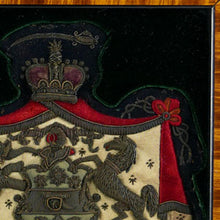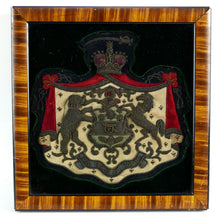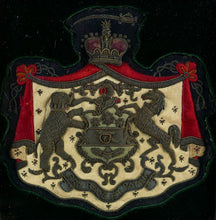Princely India - Maharaja of Kapurthala Postilion’s Armorial Badge, 1900
- Regular price
- £575
- Sale price
- £575
- Regular price
-
- Unit price
- /per
Adding product to your cart
24cm (9.5in) x 23cm (9in)
Bullion wire, cotton and velvet postilion or royal attendant’s badge. Framed and glazed.
The Kapurthala arms were probably granted at the time of the Imperial Assemblage at Delhi in 1877 when the Viceroy of India Lord Lytton declared Queen Victoria Empress of India to the ‘Chiefs and princes of India with the utmost pomp and magnificence'. Just before the ceremony the Indian princes were each presented with a silken banner bearing their own arms and the date of the event. The Kapurthala arms are as follows: Azure, on a fesse Or a field-piece Gules, in chief a sun radiant between two stars, in base a trefoil of the second. Crest: On a helmet to the dexter, lambrequined Azure and Or, a sword erect proper, hilted Or. Supporters: An elephant on the dexter and a horse Sable on the sinister. Motto: Pro Rege et Patria (For King and Fatherland).
Read more

Major-General Sir Jagatjit Singh, Maharaja of Kapurthala (1872-1949) enjoyed a long reign over the Sikh state succeeding his father at the age of five in 1877, and assumed full ruling powers on his coming of age in November 1890. He was commander-in-chief of the state forces which served alongside the British Indian Army on the North West Frontier in 1897; against the Germans in East Africa during the First World War; and against the Japanese in the Far East during the Second World War. Whilst a friend to the British, the Maharaja was an ardent world traveller and Francophile - his principal palace being modelled on Versailles. Active in international affairs, he served as the Indian Representative to the League of Nations General Assembly in Geneva in 1926, 1927 and 1929, and attended the Round Table Conference of 1931. In 1947 he became Deputy Governor for life of the proposed Sikh homeland of Patiala and the East Punjab States Union.






